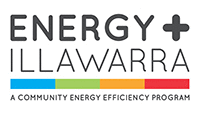LIGHTING
Compared to other things, like your appliances and heating and cooling, lighting takes up a small portion of your energy bill; somewhere between 8 and 15 per cent of the average household electricity budget.
However, most households could reduce the amount of energy they use for lighting by 50% or more by making smarter lighting choices and moving to more efficient technologies.
WHAT TYPE OF LIGHTING SHOULD I USE?
The current recommendation is to use Light Emitting Diode (LED) lights. Recent price drops have made LED lights by far the cheapest to own and operate. Incandescent and halogen lights should be replaced even before failing (unless used very little, then wait until failure before replacing). For Compact Fluorescent Lamps (CFL’s) it is best to wait until they fail, then replace with LED lights.

LIGHT EMITTING DIODE (LED) LIGHTS
The current recommendation is to use Light Emitting Diode (LED) lights. LED lights are by far the cheapest to own and operate. Incandescent and halogen lights should be replaced with LED’s even before failing (unless used very little, then wait until failure before replacing). For Compact Fluorescent Lamps (CFL’s) it is best to wait until they fail, then replace with LED lights.
Newer LED lights come in a variety of options, meaning you can choose the style of light that you like. Some globes approach the warm light of incandescents, and some cast a cooler white light.
They also come in a wide variety of shapes and sizes for use in all forms of lighting, from reading lamps to ceiling lights.
LEDs were once quite expensive to purchase but the price continues to fall as this technology becomes more available. They are now much cheaper than before.
To save money, consider replacing your bulbs in phases based on how often they are used. We recommend LEDs in areas where the light will be on for more than 1 hour a day as this will give the greatest savings.
COMPACT FLUORESCENT LIGHTS (CFL’s)
CFL’s use about 70% less energy than incandescent bulbs and are the second most energy efficient lighting technology on the market today. They contain trace amounts of Mercury which means there is potential for pollution when CFL bulbs are improperly disposed of. For CFL’s we recommend to wait until they fail, then replace with LED lights.
Even in such a small amount, mercury merits a degree of caution. Direct exposure can cause damage to the brain, lungs, and kidneys. If a CFL shatters on your kitchen floor, you don’t need to panic. Open a window and let the room air out for 10 minutes, then carefully transfer the glass and dust into a sealable container to be disposed of. Don’t use a vacuum cleaner as you don’t want to kick the chemicals up into the air.
Like all fluorescents, CFLs contain trace amounts of mercury (typically 3 to 5 milligrams), although some contain less. This creates the potential for pollution when CFL bulbs are improperly disposed of. To find a recycling center near you that accepts CFL’s you can go to the ‘recycling near you’ website: www.recyclingnearyou.com.au
There is a split second surge in power to start a fluorescent light but this does not represent much electricity. These lights should be turned off whenever not required, just like any other light.
HALOGEN LIGHTS
In terms of energy efficiency Halogen globes are only marginally better than standard incandescents. Because of this poor energy efficiency we recommend replacing Halogen globes (even before failing) with far more efficient LED’s.
Downlights that are recessed into the ceiling promote air leakage to the outside and waste heating and cooling energy. They are also typically halogen which are inefficient by todays standards.
If you have downlights and wish to replace them it is best to get an electrician to replace the whole fitting. Also ask them to install a downlight cover with insulation safely topped up right around the downlight.
INCANDESCENT LIGHTS
The traditional pear-shaped incandescent bulbs are highly inefficient and costly to run. These bulbs waste up to 90 per cent of the energy they use, mainly as heat. Because of this the Australian Government phased out these globes in favour of newer much more efficient technologies.
